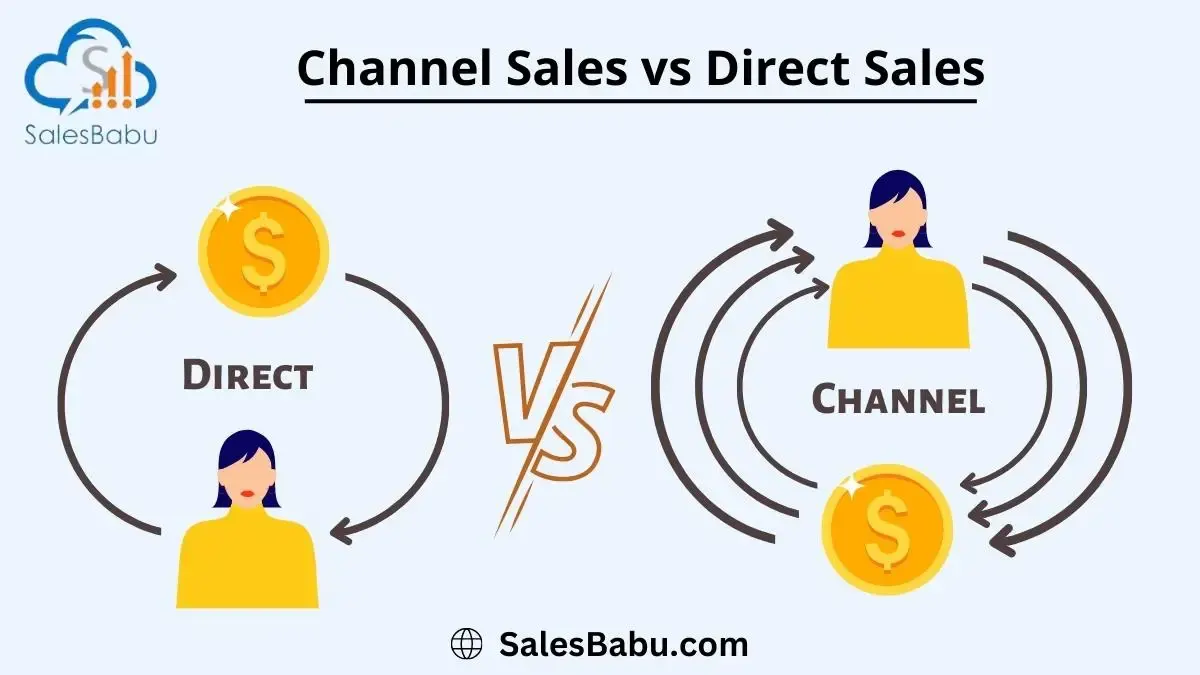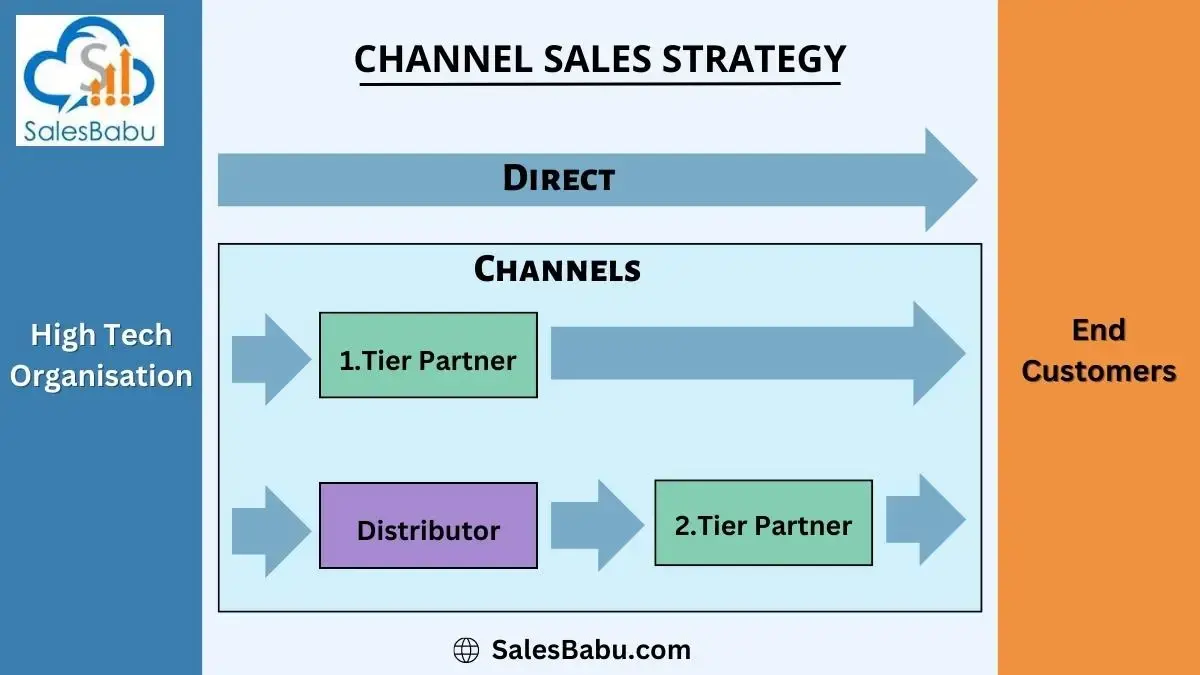What is Channel Sales?
Channel sales refers to the process of selling products or services through third-party entities, known as channels, rather than directly to end customers. These channels can include distributors, wholesalers, retailers, value-added resellers (VARs), consultants, brokers, or other intermediaries who help facilitate the sale of goods or services.
In a channel sales model, the manufacturer or service provider relies on these intermediaries to market, sell, and distribute their products to customers. This approach allows companies to leverage the expertise, resources, and networks of these channel partners to reach a broader audience and penetrate different markets more effectively.
Channel sales strategies often involve establishing partnerships with various channel partners, providing them with incentives such as discounts, commissions, or marketing support to motivate them to promote and sell the products or services. Effective channel management is crucial for coordinating activities, maintaining good relationships with partners, and ensuring alignment with the overall sales and marketing objectives of the company.
Overall, channel sales can be a highly efficient and scalable way for companies to expand their market reach, increase sales, and drive business growth.
Read More- Top Challenges in CRM Solution Implementation

What are Direct Sales?
Direct sales refer to the process of selling products or services directly to customers without involving intermediaries or third-party channels. In a direct sales model, the company sells its products or services directly to consumers through various methods, such as:
- Company-owned retail stores: Companies establish their own retail outlets where customers can purchase products directly from the company.
- E-commerce platforms: Companies sell their products online through their own websites or third-party online marketplaces, allowing customers to make purchases directly.
- Sales representatives or agents: Companies employ sales representatives or agents who directly engage with customers to promote and sell products or services. This can involve door-to-door selling, telemarketing, or personal selling in business-to-business (B2B) settings.
- Catalog sales: Some companies utilize catalogs or brochures to showcase their products, allowing customers to place orders directly through mail or online.
Direct sales models offer several advantages, including:
- Direct interaction with customers: Direct sales allow companies to engage directly with customers, providing personalized service and addressing their specific needs and preferences.
- Control over sales process: Companies have greater control over the sales process, pricing, branding, and customer experience when selling directly to consumers.
- Higher profit margins: By eliminating intermediaries, companies can retain higher profit margins on sales.
- Better customer insights: Direct sales enable companies to gather valuable data and insights about customer preferences, behavior, and purchasing patterns, which can inform marketing strategies and product development.
However, direct sales also come with challenges, such as the need for significant investment in sales infrastructure, customer acquisition costs, and the potential for higher overhead expenses compared to channel sales models.

Channel Sales: Pros and Cons
The Pros:
1. Effective scaling:
If your company has an established channel sales strategy with the respective profit sharing, incentives,co-marketing, and other plans, your company can scale very significantly by adding more channel partners into that mix. One partner manager may manage multiple partnerships and that in effect may get in revenue that will require an entire in-house sales department.
Read More – Lead Management Software System
2. Low sales, marketing, and distribution cost:
The third-party channel partner mostly has an established presence and is well-known and trusted by local clients. So, your company can reach new clients at a very low initial cost and can enter new geographical regions and markets in a very cost-effective way.
The Cons:
1. Less predictable revenues:
Partners may not always share their full pipeline with your company and even if they do it’s hard to forecast profits when your company has no control over the sales stages. To a degree, this may be offset by a larger pool of third-party partners that have a larger total pipeline.
2. Less control over the sales stages:
Selling through third-party partners means that there is an intermediary between your company and the customer. Depending on the strategy, your firm may not even be part of the sales stages so your company has little or no ability to influence the end result of sales opportunities.
Read More – Tips For Choosing The Best Distributor Management System
Direct Sales:
Pros and Cons
The Pros:
1. Direct Receiving of feedback:
Since your company is selling directly to clients, your company get a direct line of feedback from their customers like, about what customers like or don’t like in your goods or service and your company can make changes on the same..
Read More- Importance of Sales Tracking Software For Your Business Growth
2. Full control of the sales stages:
Your company has full control to evolve your sales process and stages and manage the pipeline without any interference from external parties.
3. No discounts:
Selling directly the products means that your company do not have to share the revenues and profits with a reseller or third-party channel partner.
4. Little or no reliance on external parties for profit generation:
Your company will have full control over the sales process, then pricing and all the components of the sales process..
Read More – Right Approach To Distribution Management Software (DMS)
The Cons:
1. Difficult to scale:
Scaling a sales department requires training, recruiting, and onboarding of new sales reps.
2. High barriers of entrance in new targeted markets:
Entering into a new market with a direct sales department means a new firm, a new office, and everything that goes with it. It is a quite expensive endeavor compared to entering a new targeted market through a network of local third-party partners and resellers who already have an established presence in the local market.
3. High Cost:
Managing and developing a sales department with sales members is quite expensive. Just like any other division or group a sales department comes with administrative and management overhead on top of the bonuses, payroll, and other expenses.
What do you mean by a Sales Channel Strategy?
A sales channel strategy is the method of engaging with third parties partners to build business partnerships to get a bigger and wider range market for goods and services. When your company utilizes a sales channel strategy in your company, then more clients can get their hands on your goods and services. Your company has to do some intensive research and make planning and plotting accordingly to implement your sales channel strategy.
In a simplified way, channel sales is an indirect sale in which a business introduces its product to the market through a medium of different third party channels that a business employs to help launch, promote, sell and service your product to increase your profit. The ultimate keyword when it leads to channel sales is Third party. Channel sales tend to involve a medium of using Third party partnerships to introduce the product to the market.
One of the benefits of utilizing channel sales is that you can create a wider net, and reach an abundance of prospective customers which you would be able to figure out by yourself.
Further benefit involves that during partnering with a third party allows you to outsource bulk of the operations and workflow of entire sales completely depending on the channel you opt for. Such leads to everything from finding entirely new prospects till after-sales services which will be taken in control by the channel partner.
Therefore, indirect sales channels are those when a company utilizes third-party intermediaries to approach the prompt customers. Some of the examples of indirect sales channels that include distributors, wholesalers, and retailers.
Furthermore, in order to boost growth some of the most flourishing companies combine channel sales with direct sales. Such as, a company might utilize direct sales services to approach premium customers while also selling its products through retail outlets to target a wider market.
Read More – What is a Distribution Management System?

To do this, follow these important steps:
- Step 1: Estimate your current sales process of the product and services of your company
- Step 2: Estimate your sales partners
- Step 3: Empower and train your third-party partners to help your company to get more sales
- Step 4: Recruit a channel sales manager or any other managers which have major work to do
Conclusion
Discovering the ideal sales channel or combination of channels often requires significant time and experimentation. Different markets may demand different approaches for the same goods or service.
Additionally, the effectiveness of various channels can vary depending on the stage of your business. As a smaller organization, you might rely on the support and reach of partners but as your company evolve and expand reach your company may have the ability to reach your customers directly and optimize your sales and distribution costs.ers directly, thereby optimizing your sales and distribution costs.













